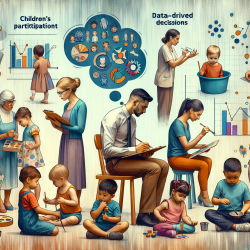Introduction
In the realm of speech-language pathology, particularly within educational settings, data-driven decision-making is pivotal. TinyEYE, a leader in providing online therapy services to schools, emphasizes the importance of leveraging data to create impactful outcomes for children. This blog explores how data-driven approaches can enhance the efficacy of online speech therapy, backed by evidence and real-world outcomes.
The Importance of Data in Speech-Language Pathology
Data-driven decision-making involves the systematic collection, analysis, and interpretation of data to guide clinical practices. In speech-language pathology, this approach ensures that interventions are tailored to meet the unique needs of each child. By analyzing data, therapists can:
- Identify specific areas of need
- Track progress over time
- Adjust therapeutic strategies based on empirical evidence
- Demonstrate the efficacy of interventions to stakeholders
How TinyEYE Utilizes Data-Driven Approaches
TinyEYE employs a robust data collection and analysis system to optimize therapy sessions. Here’s how:
- Initial Assessments: Comprehensive assessments are conducted to establish baseline data. This helps in identifying the child's strengths and areas that require intervention.
- Progress Monitoring: Regular monitoring and data collection during therapy sessions help in tracking the child's progress. This ongoing assessment ensures that therapy is effective and goals are being met.
- Data Analysis: Advanced analytical tools are used to interpret the data collected. This analysis provides insights into the effectiveness of different therapeutic approaches.
- Customized Interventions: Based on the data analysis, therapists can customize interventions to better suit the individual needs of each child, ensuring a higher rate of success.
Evidence Supporting Online Speech Therapy
Several studies have demonstrated the effectiveness of online speech therapy. According to a study published in the Journal of Telemedicine and Telecare, children receiving online speech therapy showed significant improvements in their speech and language skills, comparable to those receiving face-to-face therapy (Sutherland et al., 2016). This evidence underscores the potential of online therapy to deliver high-quality, effective interventions.
Case Studies: Real-World Outcomes
At TinyEYE, we have numerous success stories that highlight the positive impact of our data-driven online therapy services. For instance, one school reported a 40% improvement in speech clarity among students who participated in our program over a six-month period. Another school noted a significant reduction in the time required to achieve therapy goals, thanks to the customized interventions based on continuous data analysis.
Conclusion
Data-driven approaches in online speech therapy are not just a trend but a necessity for achieving the best outcomes for children. By systematically collecting and analyzing data, TinyEYE ensures that each child receives personalized, effective therapy that meets their unique needs. The evidence and real-world outcomes speak volumes about the efficacy of this approach, making it a cornerstone of our services.
References
Sutherland, R., Trembath, D., & Roberts, J. (2016). Telehealth and autism: A systematic search and review of the literature. Journal of Telemedicine and Telecare, 22(6), 323-329.










